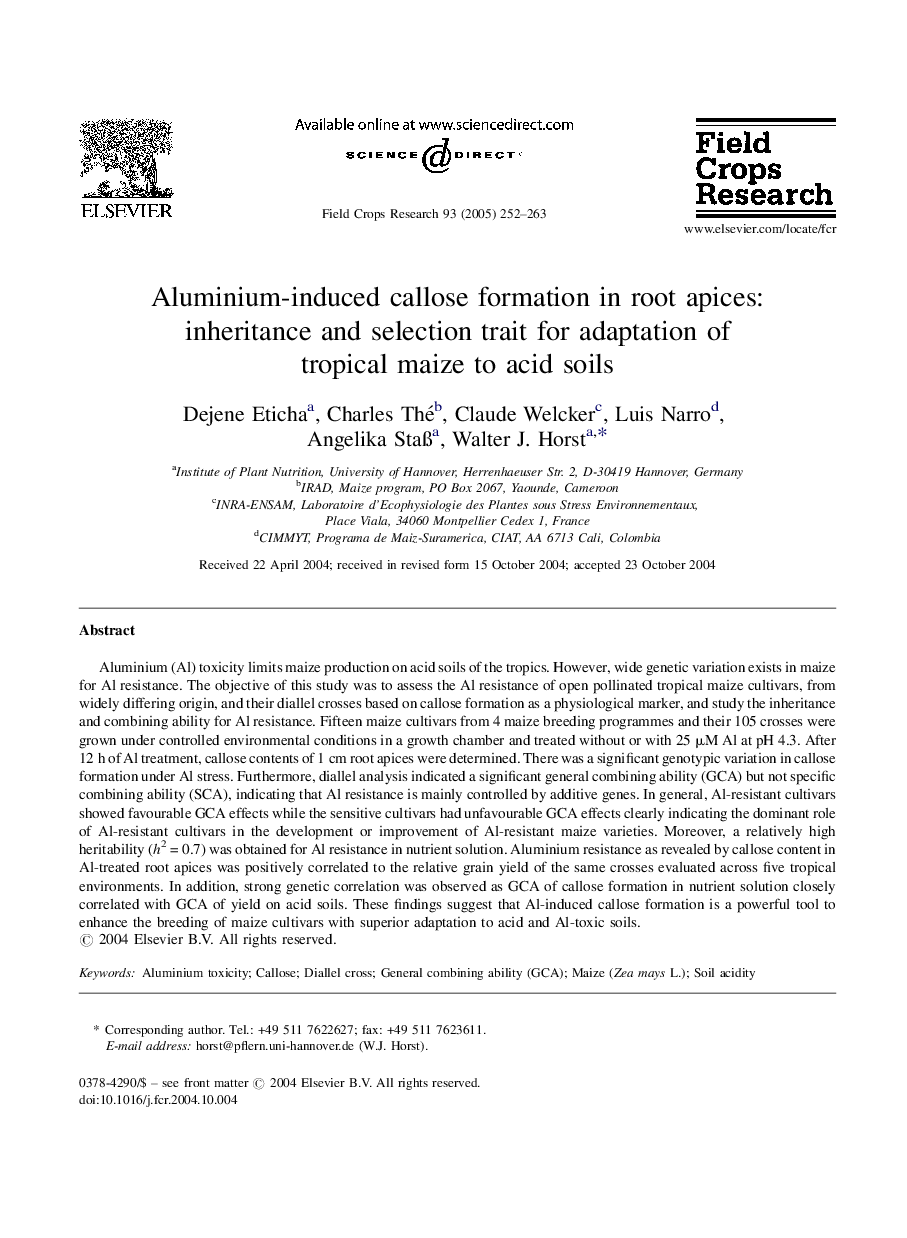| Article ID | Journal | Published Year | Pages | File Type |
|---|---|---|---|---|
| 9473485 | Field Crops Research | 2005 | 12 Pages |
Abstract
Aluminium (Al) toxicity limits maize production on acid soils of the tropics. However, wide genetic variation exists in maize for Al resistance. The objective of this study was to assess the Al resistance of open pollinated tropical maize cultivars, from widely differing origin, and their diallel crosses based on callose formation as a physiological marker, and study the inheritance and combining ability for Al resistance. Fifteen maize cultivars from 4 maize breeding programmes and their 105 crosses were grown under controlled environmental conditions in a growth chamber and treated without or with 25 μM Al at pH 4.3. After 12 h of Al treatment, callose contents of 1 cm root apices were determined. There was a significant genotypic variation in callose formation under Al stress. Furthermore, diallel analysis indicated a significant general combining ability (GCA) but not specific combining ability (SCA), indicating that Al resistance is mainly controlled by additive genes. In general, Al-resistant cultivars showed favourable GCA effects while the sensitive cultivars had unfavourable GCA effects clearly indicating the dominant role of Al-resistant cultivars in the development or improvement of Al-resistant maize varieties. Moreover, a relatively high heritability (h2 = 0.7) was obtained for Al resistance in nutrient solution. Aluminium resistance as revealed by callose content in Al-treated root apices was positively correlated to the relative grain yield of the same crosses evaluated across five tropical environments. In addition, strong genetic correlation was observed as GCA of callose formation in nutrient solution closely correlated with GCA of yield on acid soils. These findings suggest that Al-induced callose formation is a powerful tool to enhance the breeding of maize cultivars with superior adaptation to acid and Al-toxic soils.
Related Topics
Life Sciences
Agricultural and Biological Sciences
Agronomy and Crop Science
Authors
Dejene Eticha, Charles Thé, Claude Welcker, Luis Narro, Angelika StaÃ, Walter J. Horst,
